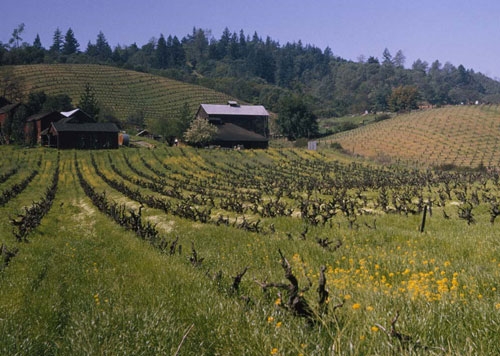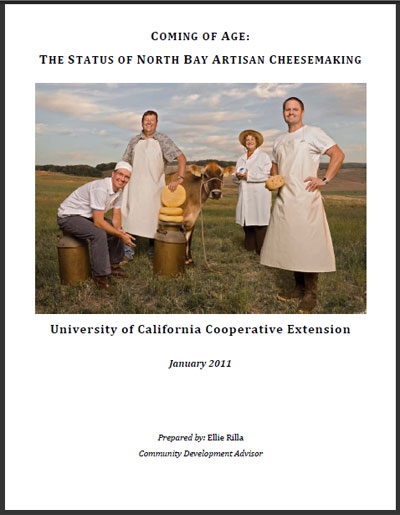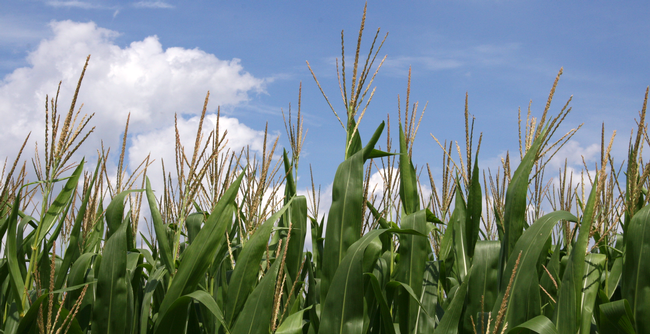
Posts Tagged: Stephanie Larson
Anti-GMO measure is on the Sonoma County ballot
Sonoma County residents are voting today whether to join neighboring counties in a ban of genetically modified agricultural crops, reported Filipa Ioannou in the San Francisco Chronicle.
County voters rejected a similar ordinance 11 years ago. However, judging from the money donated to the campaigns in favor and against Measure M, some minds have been changed. In 2005, more than a $1 million went into the fight, with opponents outspending supporters by about $55,000. This time, the supporters have raised more than detractors, with the campaign in favor receiving $278,233, and the campaign against $67,500, the article said.
This comes despite an impact report by the director of UC Cooperative Extension in Sonoma County, Stephanie Larson. The report says few genetically engineered crops are now grown in Sonoma County and the potential impact of the ordinance on the growth of the local agricultural industry is not known. Larson's report says GMO crops have bee consumed by humans in billions of servings of food over 20 years without a single documented health problem.
“Is this maybe a solution in search of a problem? I wonder about that,” said Kim Vail, executive director of the Sonoma County Farm Bureau. “We live in a free-market economy. Consumers have choices, producers should have choices. Let the market decide.”
Passage of Measure M would align the county with its neighbors. Marin County, which passed Measure B in 2004, was the first to ban GMOs in the United States. Four other Northern California counties - Humboldt, Mendocino, Santa Cruz and Trinity - have banned genetically modified agricultural crops.
Update: Measure M passed with nearly 60 percent of the vote.
Glenda Humiston named vice president of UC Agriculture and Natural Resources

"I'm excited beyond belief," Humiston told the Press Democrat. "This is such an opportunity to make a difference on many levels."
Humiston succeeds Barbara Allen-Diaz, who retired June 29.
The new vice president grew up raising cattle in Colorado and credits her participation in 4-H as a child with developing her interest in farmland preservation and environmental sustainability. She served as a Peace Corps volunteer in Tunisia, was deputy undersecretary for the USDA during the Clinton administration, and her most recent position has been California state director of USDA Rural Development.
“I've spent my whole life trying to bridge agriculture and environmental issues,” Humiston said. “What people don't realize is it's a natural bridge. When people get past the fighting, they often realize we have 80 percent in common.”
Stephanie Larson, UC ANR Cooperative Extension advisor and director of the Sonoma County office, called the appointment of the Sonoma County resident "exciting."
“If you think about Sonoma County, we have a half-million acres that can function as some form of working landscape — like forest lands, croplands and water," Larson said. "Everything has an opportunity and these are going to be key to address drought and climate change.”
UC ANR publication helps hikers co-exist with cows
Hikers, cyclists and runners can learn to enjoy nature alongside grazing cattle with information from a new UC Agriculture and Natural Resources publication, reported Andrew McGall in the Contra Costa Times.
Sharing Open Space: What to Expect from Grazing Livestock, written by Stephanie Larson, UC ANR Cooperative Extension livestock advisor, is available free in ANR Catalog.
The publication explains how to read the behavior patterns of cows with calves, heifers, steers and bulls. For example, when approaching a cow on the trail, it's best to stay in it's "flight zone" to encourage it to move out of the way.
The guideline says dogs accompanying hikers must be kept under control.
"Cattle see dogs as predators," the brochure warns. "This is especially true for mother cows, who naturally become aggressive when trying to protect their young."
The story was also covered by the Sacramento Bee on May 27:
Moooving along: How to handle a cow on the trail
Sam McManis, Sacramento Bee, May 27, 2015
Waving one's arms, clapping and yelling? Not recommended, according to a new downloadable brochure, “Sharing Open Space: What to Expect From Grazing Livestock,” published by University of California Division of Agriculture and Natural Resources. “(Cattle) don't necessarily react how you expect them to, because of that issue with the flight zone,” said Sheila Barry, UC ANR Cooperative Extension advisor. “So, you think, ‘Hey, I'm getting really close, why aren't you moving, cow?' Most will move off, eventually. But there's part of it that's just not predictable.”
UCCE teaching the next generation of farmers

“We recognize that the current population of farmers is aging, and that we need to get our younger farmers prepared and ranching,” said Stephanie Larson, UC Cooperative Extension advisor in Sonoma County and director of the new training program. “We’re really hoping to not only get more farmers and ranchers trained, but to increase food access and food production in Sonoma County, and also to teach more people about where their food comes from.”
Students in the program will split their time between classwork with ag teachers, field work with local farmers and business plan development with small business experts. The program will expand to include the broader farming community, connecting students with restaurants and grocers that buy local produce and the slew of farmers’ markets around the county.
“Programs like this strengthen the parts we already have and bring farmers together,” Larson said. “We used to work mainly in silos, but we’ve been breaking those silos down, and finding it works much better together than separately.”
Another blessing for Napa
Paul Franson, Napa Valley Register
On top of wine, food, arts and culture that some large cities might envy, Napa Valley has an invaluable, little-recognized asset: an uncommonly cooperative and educated wine industry.
Artisan cheesemaking coming of age in California
The development of an artisan cheesemaking industry in Sonoma and Marin counties is enhancing the ambience of agriculture in the picturesque rural community, according to Stephanie Larson, the director of UC Cooperative Extension in Sonoma County.
She made the comment in an article that ran over the weekend in the Santa Rosa Press-Democrat about dairies adding value to their product by creating gourmet cheeses. Much of the data shared in the story came from a report developed by UCCE community development advisor Ellie Rilla, Coming of Age: The Status of North Bay Artisan Cheesemaking, which was released in January.
Marin and Sonoma counties have 22 commercial cheese plants which produce 8 million pounds of artisan cheese each year, with a retail value of $119 million, according to the study.
"It's the largest concentration in California," the story quoted Rilla. She said one-third of the businesses have been making cheese for three years or less.
Though growing, the North Bay's artisan cheese business is tiny compared to California's commodity cheese industry, which produces 2 billion pounds of cheese annually, half of it mozzarella.
Many artisan cheesemakers turn to organic production and special blends to set themselves apart. For example, producer Craig Romanni plans to be the area's first buffalo mozzarella maker and the Bohemian Creamery near Sebastopol makes nine different cheeses, including a sheep/cow blend infused with cacao nibs, the story said.

The UCCE report on artisan North Bay cheesemaking.

